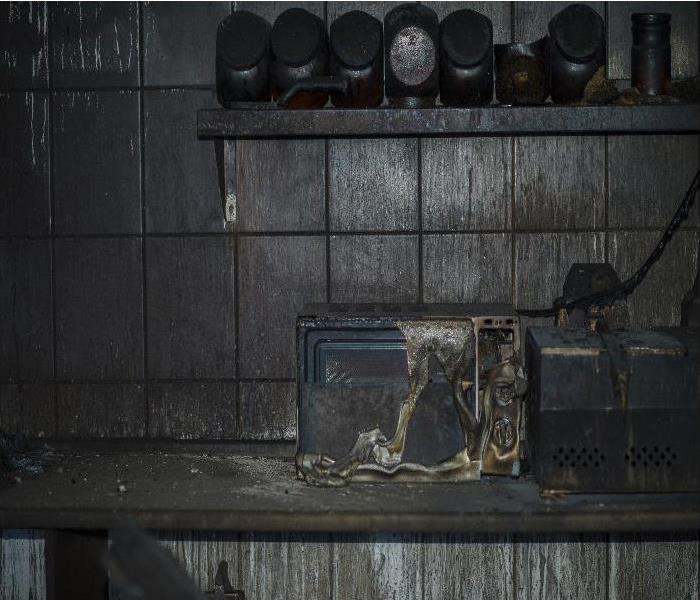How Do Carol Stream Homes Get Restored After Flash Floods?
9/7/2020 (Permalink)
 Whenever disasters strike, you can count on the fast response of our SERVPRO of Carol Stream / East Bloomingdale team to help.
Whenever disasters strike, you can count on the fast response of our SERVPRO of Carol Stream / East Bloomingdale team to help.
Flash floods can develop with little warning and leave many Carol Stream homes and businesses throughout the area damaged by rapidly changing conditions like rising waters in the streams and creeks.
Flash flooding conditions are among the most alarming for Carol Stream neighborhoods as these emergencies can simultaneously impact several properties. Even with preparation and warning, there is little that can be done to entirely prevent the damage that rushing water and rapidly rising natural flooding can do. Most of the actions that homeowners can take in these situations are reactive, meaning that the damage has already occurred. Now, professional flood restoration companies like our SERVPRO of Carol Stream / East Bloomingdale team are responding with efficient mitigation and recovery strategies.
With flood damage in Carol Stream being a common threat through the spring and summer months, it is vital to know whom to call when these disasters strike. Lower-lying properties throughout the city have contended with flood losses multiple times in just the recent years, prompting many of these homeowners to install diversion channels equipment in the basement. Sump pumps and drains can often prevent water pooling in these lower levels, but those without these diversion options often experience the worst damage.
What Areas of a Home Get Damaged During Flash Flooding?
Flash flooding here in Illinois often results from either a slow-moving storm system that is unloading substantial amounts of rainfall or several systems passing through in quick succession. Excessive runoff finds its ways to creek beds, streams, and other water bodies to become an overwhelming force against nearby homes and businesses. When flash flooding moves towards your home, several areas could become damaged almost immediately:
• Basement - Lower levels of houses are not uncommon in our neighborhoods, so windows and vents for the subterranean level become points of entry for forceful flooding conditions.
• Siding - With no points of your foundation above grade, the veneer and brickwork of your home go right to the ground level. When exposed to devastating flood water with debris and other solids, the siding could become destroyed.
• Foundation – Exposed foundations can fall victim to the immense pressure that high volumes of water can produce. Hydrostatic force can push the wall of water through cracks and vulnerabilities in masonry to reach your basement.
• First Floor – When your home does not have a basement level and instead is sitting on a concrete slab as a foundation, rising water can quickly surpass your home's thresholds and enter the first floor.
• Garage – Garages have little defense for water that overwhelms grating and drains in front of the bay door. Once debris blocks the grating of this drain, water can easily enter your garage area.
What Extraction Options Are Best for Natural Flooding?
Removing standing water is a vital need after your home is a victim of flash flooding. While water outside your home can subside, the several inches or feet of pooling in your basement requires effective extraction solutions to resolve. Because flash floods welcome extensive debris and solids into your home along with the water, electric submersible pumps that would often be ideal for water removal are ineffective. Instead, our SERVPRO team utilizes flood removal tools that can also pass debris and smaller solids, such as:
• Trash Pumps
• Wet Vacuums
• Truck-Mount Extractors
With surface water almost entirely addressed, we can begin vital muck-out cleaning for the property. This process removes mud, debris, solids, and other potential contaminants from the house. Extracted water can also help to identify exposed materials that must get discarded and later replaced by our in-house contractors.
Is Controlled Demolition Necessary?
As much as many homeowners might assume that flood recovery involves drying the house and wipe cleaning the surfaces that got dirty, there is often a higher risk of contamination, bacteria, and viral pathogens to consider. The movement of rushing floodwater can encounter multiple damaging substances, chemicals, and other degrading biological debris that creates a health hazard. Our contractors must remove exposed materials and replace them to ensure that these blackwater incidents do not become a threat to occupants of the house or responding technicians. Choices in controlled demolition involve:
• Contamination Exposure
• Structural Deterioration
• Saturation
• Mold/Microbial Threats
Multiple threats can result from unexpected flooding in the area. Because flash floods can develop over just a few hours, there is often little that can be done to thwart the damage your home could experience completely. Whenever disasters strike, you can count on the fast response of our SERVPRO of Carol Stream / East Bloomingdale team to help. We are available 24/7 at (630) 830-6236.






 24/7 Emergency Service
24/7 Emergency Service